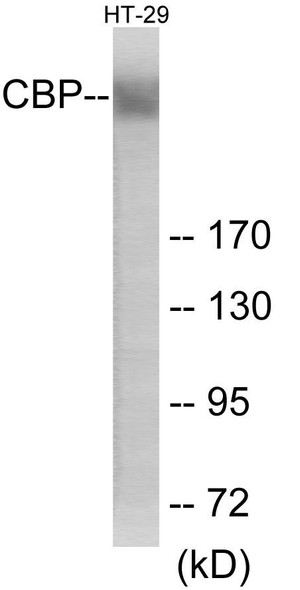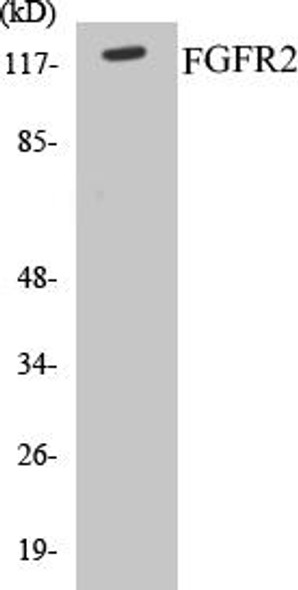Cell Biology
p300/CBP Colorimetric Cell-Based ELISA Kit
- SKU:
- CBCAB00788
- Product Type:
- ELISA Kit
- ELISA Type:
- Cell Based
- Research Area:
- Cell Biology
- Reactivity:
- Human
- Reactivity:
- Mouse
- Reactivity:
- Rat
- Detection Method:
- Colorimetric
Description
| Product Name: | p300/CBP Colorimetric Cell-Based ELISA |
| Product Code: | CBCAB00788 |
| ELISA Type: | Cell-Based |
| Target: | p300/CBP |
| Reactivity: | Human, Mouse, Rat |
| Dynamic Range: | > 5000 Cells |
| Detection Method: | Colorimetric 450 nmStorage/Stability:4°C/6 Months |
| Format: | 96-Well Microplate |
The p300/CBP Colorimetric Cell-Based ELISA Kit is a convenient, lysate-free, high throughput and sensitive assay kit that can detect p300/CBP protein expression profile in cells. The kit can be used for measuring the relative amounts of p300/CBP in cultured cells as well as screening for the effects that various treatments, inhibitors (ie siRNA or chemicals), or activators have on p300/CBP.
Qualitative determination of p300/CBP concentration is achieved by an indirect ELISA format. In essence, p300/CBP is captured by p300/CBP-specific primary antibodies while the HRP-conjugated secondary antibodies bind the Fc region of the primary antibody. Through this binding, the HRP enzyme conjugated to the secondary antibody can catalyze a colorimetric reaction upon substrate addition. Due to the qualitative nature of the Cell-Based ELISA, multiple normalization methods are needed:
| 1. | A monoclonal antibody specific for human GAPDH is included to serve as an internal positive control in normalizing the target absorbance values. |
| 2. | Following the colorimetric measurement of HRP activity via substrate addition, the Crystal Violet whole-cell staining method may be used to determine cell density. After staining, the results can be analysed by normalizing the absorbance values to cell amounts, by which the plating difference can be adjusted. |
| Database Information: | Gene ID: 8850, UniProt ID: Q92831, OMIM: 602303, Unigene: Hs.533055 |
| Gene Symbol: | KAT2B |
| Sub Type: | None |
| UniProt Protein Function: | PCAF: Functions as a histone acetyltransferase (HAT) to promote transcriptional activation. Has significant histone acetyltransferase activity with core histones (H3 and H4), and also with nucleosome core particles. Inhibits cell-cycle progression and counteracts the mitogenic activity of the adenoviral oncoprotein E1A. In case of HIV-1 infection, it is recruited by the viral protein Tat. Regulates Tat's transactivating activity and may help inducing chromatin remodeling of proviral genes. Interacts with SIRT1. Interacts (unsumoylated form) with NR2C1; the interaction promotes transactivation activity. Interacts with EP300, CREBBP and DDX17. Interacts with NCOA1 and NCOA3. Component of a large chromatin remodeling complex, at least composed of MYSM1, KAT2B/PCAF, RBM10 and KIF11/TRIP5. Interacts with NR2C2 (hypophosphorylated and unsumoylated form); the interaction promotes the transactivation activity of NR2C2. Binds to HTLV-1 Tax. Interacts with and acetylates HIV-1 Tat. Interacts with KLF1; the interaction does not acetylate KLF1 and there is no enhancement of its transactivational activity. Interacts with NFE4. Interacts with MECOM. Interacts with E2F1; the interaction acetylates E2F1 augmenting its DNA-binding and transcriptional activity. Ubiquitously expressed but most abundant in heart and skeletal muscle. Belongs to the GCN5 family. |
| UniProt Protein Details: | Protein type:Nuclear receptor co-regulator; EC 2.3.1.48; Acetyltransferase Chromosomal Location of Human Ortholog: 3p24 Cellular Component: nucleoplasm; nucleus Molecular Function:acetyltransferase activity; chromatin binding; cyclin-dependent protein kinase inhibitor activity; histone acetyltransferase activity; histone deacetylase binding; lysine N-acetyltransferase activity; protein binding; protein complex binding; protein kinase binding; transcription coactivator activity; transcription cofactor activity; transcription factor binding Biological Process: cell cycle arrest; cellular response to insulin stimulus; chromatin remodeling; internal peptidyl-lysine acetylation; N-terminal peptidyl-lysine acetylation; negative regulation of cell proliferation; Notch signaling pathway; peptidyl-lysine acetylation; positive regulation of gene expression, epigenetic; positive regulation of transcription from RNA polymerase II promoter; protein amino acid acetylation; transcription initiation from RNA polymerase II promoter |
| NCBI Summary: | CBP and p300 are large nuclear proteins that bind to many sequence-specific factors involved in cell growth and/or differentiation, including c-jun and the adenoviral oncoprotein E1A. The protein encoded by this gene associates with p300/CBP. It has in vitro and in vivo binding activity with CBP and p300, and competes with E1A for binding sites in p300/CBP. It has histone acetyl transferase activity with core histones and nucleosome core particles, indicating that this protein plays a direct role in transcriptional regulation. [provided by RefSeq, Jul 2008] |
| UniProt Code: | Q92831 |
| NCBI GenInfo Identifier: | 83287776 |
| NCBI Gene ID: | 8850 |
| NCBI Accession: | Q92831.3 |
| UniProt Secondary Accession: | Q92831,Q6NSK1, |
| UniProt Related Accession: | Q92831 |
| Molecular Weight: | 93,013 Da |
| NCBI Full Name: | Histone acetyltransferase KAT2B |
| NCBI Synonym Full Names: | lysine acetyltransferase 2B |
| NCBI Official Symbol: | KAT2B |
| NCBI Official Synonym Symbols: | CAF; PCAF; P/CAF |
| NCBI Protein Information: | histone acetyltransferase KAT2B |
| UniProt Protein Name: | Histone acetyltransferase KAT2B |
| UniProt Synonym Protein Names: | Histone acetyltransferase PCAF; Histone acetylase PCAF; Lysine acetyltransferase 2B; P300/CBP-associated factor; P/CAF |
| Protein Family: | Histone acetyltransferase |
| UniProt Gene Name: | KAT2B |
| UniProt Entry Name: | KAT2B_HUMAN |
| Component | Quantity |
| 96-Well Cell Culture Clear-Bottom Microplate | 2 plates |
| 10X TBS | 24 mL |
| Quenching Buffer | 24 mL |
| Blocking Buffer | 50 mL |
| 15X Wash Buffer | 50 mL |
| Primary Antibody Diluent | 12 mL |
| 100x Anti-Phospho Target Antibody | 60 µL |
| 100x Anti-Target Antibody | 60 µL |
| Anti-GAPDH Antibody | 60 µL |
| HRP-Conjugated Anti-Rabbit IgG Antibody | 12 mL |
| HRP-Conjugated Anti-Mouse IgG Antibody | 12 mL |
| SDS Solution | 12 mL |
| Stop Solution | 24 mL |
| Ready-to-Use Substrate | 12 mL |
| Crystal Violet Solution | 12 mL |
| Adhesive Plate Seals | 2 seals |
The following materials and/or equipment are NOT provided in this kit but are necessary to successfully conduct the experiment:
- Microplate reader able to measure absorbance at 450 nm and/or 595 nm for Crystal Violet Cell Staining (Optional)
- Micropipettes with capability of measuring volumes ranging from 1 µL to 1 ml
- 37% formaldehyde (Sigma Cat# F-8775) or formaldehyde from other sources
- Squirt bottle, manifold dispenser, multichannel pipette reservoir or automated microplate washer
- Graph paper or computer software capable of generating or displaying logarithmic functions
- Absorbent papers or vacuum aspirator
- Test tubes or microfuge tubes capable of storing ≥1 ml
- Poly-L-Lysine (Sigma Cat# P4832 for suspension cells)
- Orbital shaker (optional)
- Deionized or sterile water
*Note: Protocols are specific to each batch/lot. For the correct instructions please follow the protocol included in your kit.
| Step | Procedure |
| 1. | Seed 200 µL of 20,000 adherent cells in culture medium in each well of a 96-well plate. The plates included in the kit are sterile and treated for cell culture. For suspension cells and loosely attached cells, coat the plates with 100 µL of 10 µg/ml Poly-L-Lysine (not included) to each well of a 96-well plate for 30 minutes at 37°C prior to adding cells. |
| 2. | Incubate the cells for overnight at 37°C, 5% CO2. |
| 3. | Treat the cells as desired. |
| 4. | Remove the cell culture medium and rinse with 200 µL of 1x TBS, twice. |
| 5. | Fix the cells by incubating with 100 µL of Fixing Solution for 20 minutes at room temperature. The 4% formaldehyde is used for adherent cells and 8% formaldehyde is used for suspension cells and loosely attached cells. |
| 6. | Remove the Fixing Solution and wash the plate 3 times with 200 µL 1x Wash Buffer for five minutes each time with gentle shaking on the orbital shaker. The plate can be stored at 4°C for a week. |
| 7. | Add 100 µL of Quenching Buffer and incubate for 20 minutes at room temperature. |
| 8. | Wash the plate 3 times with 1x Wash Buffer for 5 minutes each time. |
| 9. | Add 200 µL of Blocking Buffer and incubate for 1 hour at room temperature. |
| 10. | Wash 3 times with 200 µL of 1x Wash Buffer for 5 minutes each time. |
| 11. | Add 50 µL of 1x primary antibodies (Anti-p300/CBP Antibody and/or Anti-GAPDH Antibody) to the corresponding wells, cover with Parafilm and incubate for 16 hours (overnight) at 4°C. If the target expression is known to be high, incubate for 2 hours at room temperature. |
| 12. | Wash 3 times with 200 µL of 1x Wash Buffer for 5 minutes each time. |
| 13. | Add 50 µL of 1x secondary antibodies (HRP-Conjugated AntiRabbit IgG Antibody or HRP-Conjugated Anti-Mouse IgG Antibody) to corresponding wells and incubate for 1.5 hours at room temperature. |
| 14. | Wash 3 times with 200 µL of 1x Wash Buffer for 5 minutes each time. |
| 15. | Add 50 µL of Ready-to-Use Substrate to each well and incubate for 30 minutes at room temperature in the dark. |
| 16. | Add 50 µL of Stop Solution to each well and read OD at 450 nm immediately using the microplate reader. |
(Additional Crystal Violet staining may be performed if desired – details of this may be found in the kit technical manual.)






